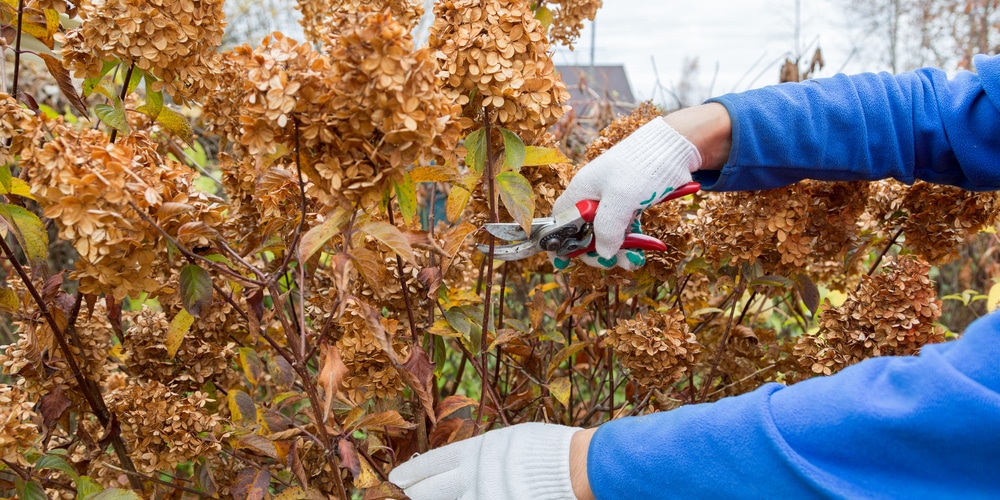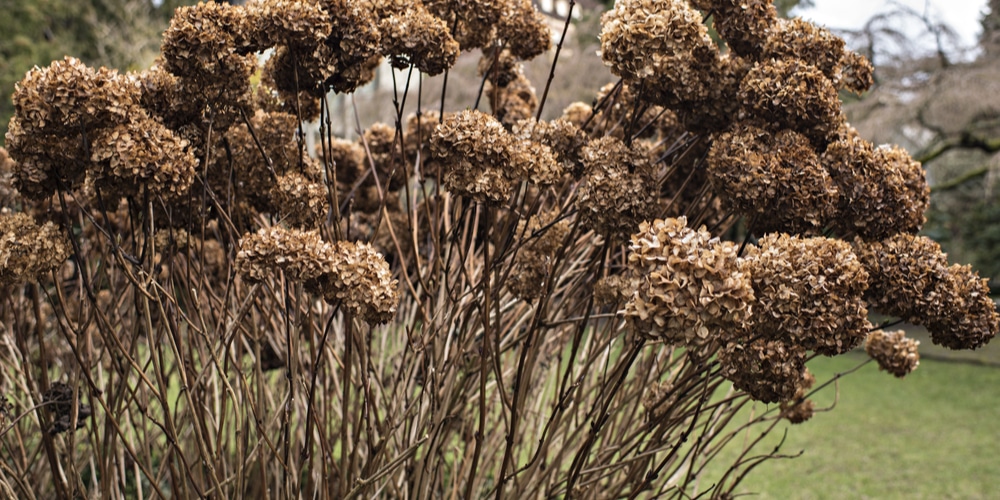Fragrant and beautiful, hydrangeas bloom beautifully in gardens across the country. These delicate flowers come in a rainbow of colors, from deep purple to pristine white. Hydrangeas are known for their lush blooms, ranging in size from small and dainty to large and showy. But do hydrangeas die in the winter?
Though they are stunningly resilient, cold weather can take its toll on these lovely flowers. What does that mean for gardeners in colder climates? Here are a few tips on caring for your hydrangeas during the winter months.
Do Hydrangeas Die in the Winter?
This is a common question among gardeners, and the answer is not always clear-cut. It depends on the type of hydrangea you have and the climate in your area.
Hydrangeas are native to temperate regions of Asia and North America. In their natural habitats, they experience a wide range of temperatures, from hot summers to cold winters. The hydrangeas that are most commonly grown in gardens are adapted to survive in a variety of climates.
Generally speaking, if you have mild frosts in your area, your hydrangeas should be just fine. Ideally, hydrangeas can survive temperatures down to -10 degrees Fahrenheit. However, once temperatures have reached 12 degrees below zero, these beautiful plants will start to experience damage and may not bloom the following season.
Preparing and Protecting Your Hydrangeas for Winter
If you live in an area with harsh winters, there are a few things you can do to help your hydrangeas survive the cold weather.
One of the simplest things you can do is transfer your potted hydrangeas indoors. If you have hydrangeas in your garden, you can also cover them with a layer of mulch or straw. This will help insulate the roots and prevent them from freezing.
You can also use burlap or horticultural fabric to create a makeshift greenhouse for your plants. Simply drape the fabric over the plants, being sure to secure it at the base. This will create a warm, protected environment for your hydrangeas to weather the winter months.
What Do Hydrangeas Look Like in the Winter?
In the winter, hydrangeas seem to take on a whole new persona. The leaves that were once green and full of life become brittle and dry, falling away to reveal the bare branches beneath.
The flowers that graced the plant with their beauty all summer long are long gone, leaving behind only faded petals and a few dried seedheads. Flowers turn brown, and leaves may develop spots or blotches.
Even the stems seem to lose their color, becoming a dull brown instead of the vibrant green they are in the spring and summer.
But even though they may not be as flashy as they are in other seasons, winter hydrangeas still have a certain beauty about them. Their stark appearance can be quite striking when set against a backdrop of fresh snow or ice.
And on a sunny day, the light filtering through the bare branches creates a lovely pattern of shadows on the ground below. So even though they may not be showstoppers, these hydrangeas are still worth admiring in the winter months.
Do hydrangeas die in the winter: Final Thoughts
Hydrangeas are a popular choice for gardens all across the country. Though they are known for their vibrant blooms, hydrangeas may die depending on the region where it was planted.
It can survive some frosts down to 12 degrees. Anything below that, these plants may die. However, by taking some precautions, such as transferring your potted hydrangeas indoors or covering them with mulch, you can help them survive the winter.
Despite their bleak appearance in the winter, hydrangeas still have a certain beauty about them. So even though they may not be showstoppers, these plants are still worth admiring in the winter months.
Related Article: When to Plant Hydrangeas?

